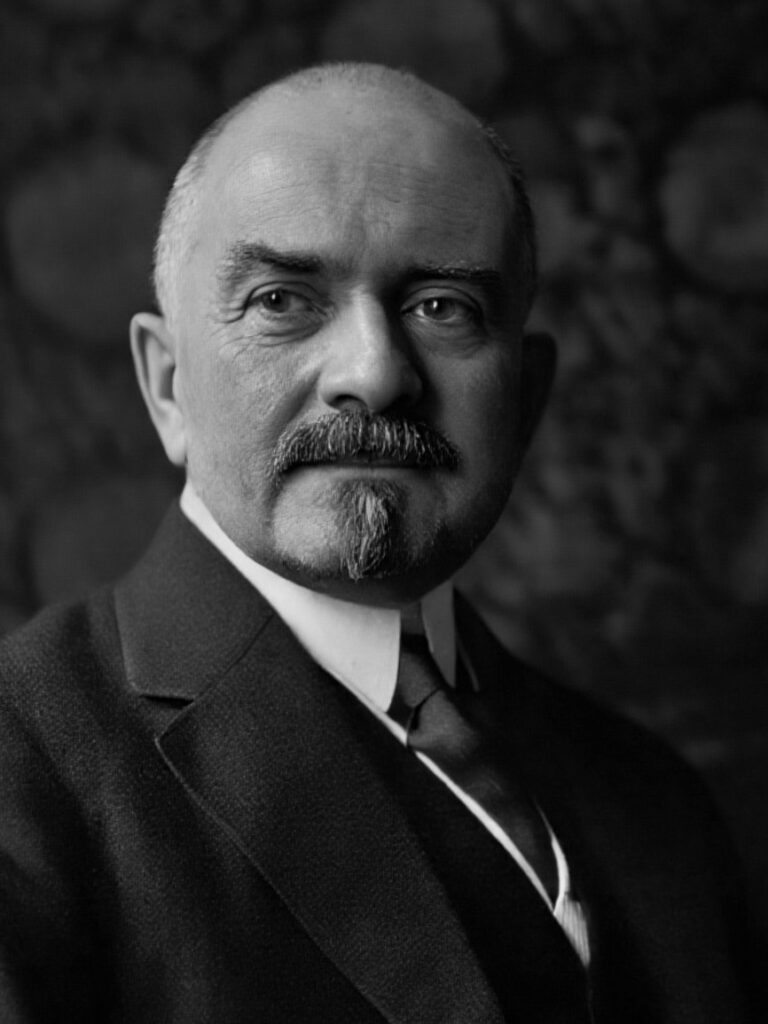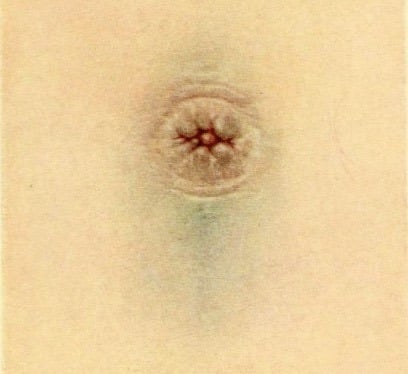Thomas S. Cullen

Thomas Stephen Cullen (1869-1953) was a Canadian gynecologist.
Cullen was a pioneer in gynaecology and pathology and a leading figure in early 20th-century women’s health. He is best remembered for his description of Cullen sign (1918), a periumbilical discolouration indicating intra-abdominal haemorrhage, often linked to ruptured ectopic pregnancy and severe pancreatitis.
Cullen graduated in medicine from the University of Toronto in 1890. He then moved to Baltimore to work under the mentorship of Howard A. Kelly (1858–1943), one of the founding surgeons of Johns Hopkins Hospital. Cullen rose rapidly through academic ranks, becoming professor of gynaecology and a prolific researcher and teacher.
Cullen made substantial contributions to the understanding of pelvic anatomy and gynaecological cancer. His monographs, including Cancer of the uterus (1900), Adenomyoma of the Uterus (1908), and Myomata of the Uterus (1909), were considered authoritative. He advocated for careful clinicopathologic correlation and introduced refined surgical techniques based on meticulous anatomical study.
In 1918, Cullen published his eponymous observation in the American Journal of Obstetrics, describing periumbilical ecchymosis in a patient with a ruptured extrauterine pregnancy. This subcutaneous bruising later became known as Cullen sign and is now understood as a non-specific but important indicator of retroperitoneal or intraperitoneal bleeding.
A charter member of the American Gynecological Society, Cullen served as its president in 1929. He was known for combining exacting scientific detail with clinical empathy. His contributions to surgical pathology were foundational in defining modern gynecologic oncology.
Biographical Timeline
- 1868 – Born November 20 in Toronto, Canada West (now Ontario), Canada.
- 1890 – Graduated MD, University of Toronto.
- 1891 – Moved to Baltimore to work under Dr. Howard A. Kelly at Johns Hopkins Hospital.
- 1893–1897 – Appointed assistant and then full gynecologist at Johns Hopkins.
- 1897 – Associate in gynaecology, Johns Hopkins
- 1900 – Published Cancer of the uterus, a landmark clinicopathologic study.
- 1908 – Published Adenomyoma of the Uterus; contributed to understanding of endometrial pathology.
- 1909 – Published Myomata of the uterus, expanding knowledge of fibroid tumors.
- 1910 – Helped found the Department of Art as Applied to Medicine, Johns Hopkins University School of Medicine
- 1918 – Described Cullen sign, reporting periumbilical ecchymosis in ruptured ectopic pregnancy.
- 1919 – Professor of clinical gynaecology, Johns Hopkins
- 1929 – Served as President of the American Gynecological Society.
- 1939 – Retired from active medical practice and teaching.
- Died on March 4, 1953 in Baltimore, Maryland, USA.
Medical Eponyms
Cullen sign (1918)
Superficial oedema with bruising in the subcutaneous fatty tissue around the peri-umbilical region.
Cullen originally described as a new sign in ruptured extrauterine pregnancy and described the finding at the 43rd annual meeting of the Transactions of the American gynecological society, Pennsylvania May 16-18, 1918
The patient, a woman, thirty-eight years of age, suddenly developed abdominal pain and distention. Dr. Cullen saw her three weeks later. The umbilical region was bluish black, although she gave no history of injury. Vaginal examination yielded nothing on account of the abdominal distention. Under ether, however, a mass 8 X 6 cm. was clearly felt to the right of the uterus. Dr. Cullen at once diagnosed extrauterine pregnancy, although the patient had missed no period and there was no uterine bleeding. On opening the abdomen he found a right-sided extrauterine pregnancy and about one and a half quarts of free blood in the abdomen.
Cullen TS, 1918
Cullen expanded on this report in Contributions to Medical and Biological Research, a two volume tome dedicated to Sir William Osler on the occasion of his seventieth birthday on July 12, 1919.
Bearing Dr. Ransohoff’s 1905 case in mind I dictated the following note prior to opening the abdomen: “The bluish black appearance of the navel unassociated with any history of injury, together with the mass to the right of the uterus, makes the diagnosis of extrauterine pregnancy relatively certain.”
I record this case in order that subsequent ruptured extrauterine pregnancies may be examined for this sign. Whether it will prove to be of common occurrence or very rare, I cannot say, but we shall naturally expect it only where there is free blood in the abdomen and shall probably be more likely to encounter it in thin individuals.
Cullen TS 1919

Cullen 1919: 420-422
Medical Art and the Max Brödel Legacy
In 1910, Cullen was instrumental in establishing the world’s first Department of Art as Applied to Medicine at Johns Hopkins University. Recognizing the value of visual communication in surgery and pathology, Cullen championed the work of German-born medical illustrator Max Brödel (1870–1941), who had initially come to Baltimore in 1894 to work under Howard Kelly. When Brödel was courted by the Mayo Clinic, Cullen persuaded Baltimore philanthropist Henry Walters to endow his post securing $5,000 annually for three years and later a $110,000 endowment.
Cullen’s advocacy enabled Brödel to train future generations of medical illustrators, fundamentally shaping medical visualization worldwide. This legacy established Johns Hopkins as the epicenter of medical illustration and cemented Brödel’s methods as the foundation of modern biomedical art. Cullen’s foresight created not just an academic department but a visual language for medicine that persists to this day.



Major Publications
- Cullen TS. Pyometra in a cat… American veterinary review, September. 1894
- Cullen TS. Hydrosalpinx, its surgical and pathological aspects : with a report of twenty-seven cases. 1895
- Cullen TS. Silkworm gut as a subcutaneous suture in closure of abdominal incisions. American journal of obstetrics, 1897; 36(2): 171-175
- Cullen TS. Cancer of the uterus: its pathology, symptomatology, diagnosis, and treatment : also the pathology of diseases of the endometrium. 1900
- Cullen TS. Adenomyoma of the Uterus. 1908
- Cullen TS. Myomata of the uterus. 1909
- Cullen TS. Embryology Anatomy and Diseases of the Umbilicus Together With Diseases of the Urachus 1916.
- Cullen TS. A new sign in ruptured extrauterine pregnancy. American journal of obstetrics and diseases of women and children. 1918; 78: 457 [Cullen Sign]
- Cullen TS. Bluish discolouration of the umbilicus as a diagnostic sign when ruptured extrauterine pregnancy exists. In: Contributions to Medical and Biological Research. 1919; 1: 420-422 [Cullen Sign]
- Cullen TS. Henry Mills Hurd, the first superintendent of the Johns Hopkins hospital. 1920
- Cullen TS. Max Brödel, 1870-1941 Director of the First Department of Art as Applied to Medicine in the World. Bull Med Libr Assoc. 1945 Jan;33(1):4.1–29.
References
Biography
- Te Linde RW. Thomas Stephen Cullen. Am J Obstet Gynecol. 1953; 66(2): 162-165-43.
- Martzloff KH. Thomas Stephen Cullen. Am J Obstet Gynecol. 1960; 80: 833-843.
Eponymous sign
- Harris S, Naina HV. Cullen’s sign revisited. Am J Med. 2008 Aug;121(8):682-3.
- Rahbour G, Ullah MR, Yassin N, Thomas GP. Cullen’s sign – Case report with a review of the literature. Int J Surg Case Rep. 2012;3(5):143-6.
- Cadogan M. Cullen sign: Eponym A Day. Instagram
- Cadogan M. Non-traumatic Abdominal Ecchymosis. LITFL
Eponym
the person behind the name
BA MA (Oxon) MBChB (Edin) FACEM FFSEM. Emergency physician, Sir Charles Gairdner Hospital. Passion for rugby; medical history; medical education; and asynchronous learning #FOAMed evangelist. Co-founder and CTO of Life in the Fast lane | On Call: Principles and Protocol 4e| Eponyms | Books |
